Thankas
The Himalayan Times: Sacred Nepali art losing colors
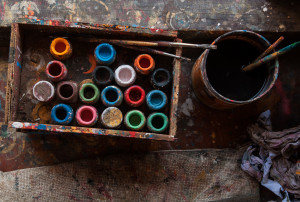 Extract from thehimalayantimes.com
Extract from thehimalayantimes.com
One of the traditions Nepal can really pride itself upon is the art of thangka paintings — which are so exquisite that foreigners have been known to extend their stay to learn the techniques. However, the rise of unhealthy competition, lack of regular-isation and emigration of artists is posing a threat to the inventive profession. Thangka is a Tibetan silk painting with embroidery, usually depicting a Buddhist deity, famous scene, or mandala. It is done on cotton canvas — found in Asian countries such as Tibet, Nepal, Bhutan, India and Mongolia — used exclusively for this purpose. Native Buddhists of Kathmandu valley call it ‘pauva chitra’ whereas it is also known as ‘tangka’, ‘thanka’, or ‘tanka’.
These paintings lucidly represent Buddhist deities and divinities that appear in sacred Buddhist practices called ‘sadhana’. This means artists are not allowed to use their imagination. There is also a belief that thangka emanates positive vibrations and good luck. “Thangkas may merely seem like beautiful and luxurious showpieces for those who are unaware about Buddhist beliefs. But for Buddhists, it is a sacred tool for meditation and purification of the soul,” says Anil Ghising, general secretary of Thangka Traders Association (TTA).
The most popular thangka designs include mandala, wheels of life and life of Buddha. They can be divided into three categories according to the quality — student piece, medium piece, and master-piece. Student piece is the work of a practitioner with a year’s experience, medium piece is the work of an artist who has over five years of experience, whereas master-pieces are created by artists with over 15 years of experience in thangka painting.
This is the major reason for the difference in the prices of similar-sized thangkas. The lack of uniformity in prices also depends upon size, art, toil and materials used. The price of thangkas begins at around Rs 500 and goes up to millions of rupees.
Meanwhile, Hajar Singh Lama, president of TTA, laments about the unhealthy competition in the market. He says, “The trend of pre-set contract with tourist guides is the major reason for such competition. Tourists are compelled to buy thangkas at the store specified by the guide, which is akin to deception.” According to him, the best way to stabilise the business is to draft and implement regulations for establishing thangka shops. Thamel, Bhaktapur and Boudha are the core areas for buying thangkas, whereas one can get them at Patan, Swoyambhu and Changu Narayan as well. According to TTA data, 222 thangka galleries function from Kathmandu valley, of which 72 are in Thamel.
Anil informs that the process of making thangka is very tedious. “An artist needs to meditate before starting his piece. Patience and dedication are essential to complete the assignment, which I feel is lacking in the new generation,” he says. Worried about the future of the industry, he suggests the government to include thangka and Buddhist scroll paintings in academia. He adds, “Thangka artists are gradually migrating to foreign lands, which threatens survival of the entire business. The government should carry out concrete work if it wants traditional art to be preserved for future generations.”
Another complaint of thangka artists is the lack of increment in business during ongoing Nepal Tourism Year. “The number of tourists has increased, but since majority of tourists come on special packages, our business has not fostered as we’d hoped,” laments Akka Lama, owner of Tibetan Thanka and School of Thanka Painting at Thamel. According to him, global economic crisis, political instability, and insecurity are main causes for the annual decline in business. However, Lama optimistically says, “The country can benefit from the tourism industry, if the government and concerned professionals concentrate on reducing the challenges and work towards making Nepal a tourist-friendly destination with ample facilities and attractions — one of them being thangka.”
Agreeing with this, Narayan Shrestha, owner of Traditional Art and Handicraft at Patan, says, “Our business relies upon foreigners, so the government should plan well to attract budget tourists.”
He opines that various ministries need to join hands to uplift thangka, tourism, and the nation as a whole.
SUJATA AWALE
Follow traditionalartofnepal.com on WordPress.com
What’s Brian Blessed most valuable possession?
The English actor Brian Blessed recently released an interview to the Daily Mail
where he was asked what is the prized possession he values above all other.
Mr. Blessed answered: “An ancient Tibetan Thangka given to me by the Dalai Lama in 1990 before my ascent of Everest.”
How To Order
- Browse our catalog and choose your favorite design.
- Select your preferred size and quality to check the price.
- Click on “Product Inquiry” to send us a message and we will check if we the artwork is immediately available. If not we will make it for you.
- Use the cart page to calculate the shipping cost by selecting your country.
- Once we receive your order we will start creating the artwork according to your preferences and provide you with updates and images upon your request.
We strive to ensure a smooth shopping experience with our assistance. We also welcome commissions of custom designs of thangkas, masks and mandalas.
Shipping and Payments
We offer trusted shipping options to ensure your purchases arrive in perfect condition, and delivered in 5 to 10 working days worldwide. We accept PayPal, debit/credit cards and bank wire transfer services.
About Our Community
We live in Changunarayan, a UNESCO heritage site located on a forested hill overlooking Bhaktapur and the Kathmandu valley. You are welcome to visit our art school and meet our community of artists and artisans.
Learn More About Our Thangka School And Workshops
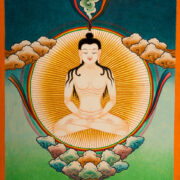 Tapihritsa Bon Yogi
Tapihritsa Bon Yogi 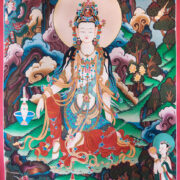 Quan Yin Thangka
Quan Yin Thangka 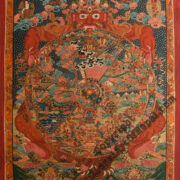 Wheel of Life 2
Wheel of Life 2 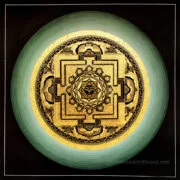 Wisdom Eyes Mandala
Wisdom Eyes Mandala  Universe Om Mandala
Universe Om Mandala 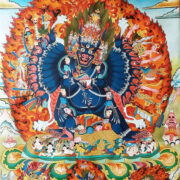 Vajrabhairava
Vajrabhairava 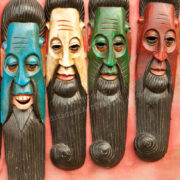 Sadhu Baba Masks
Sadhu Baba Masks 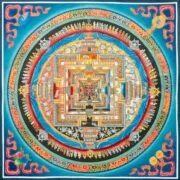 Kalachakra Mandala Auspicious Symbols
Kalachakra Mandala Auspicious Symbols 